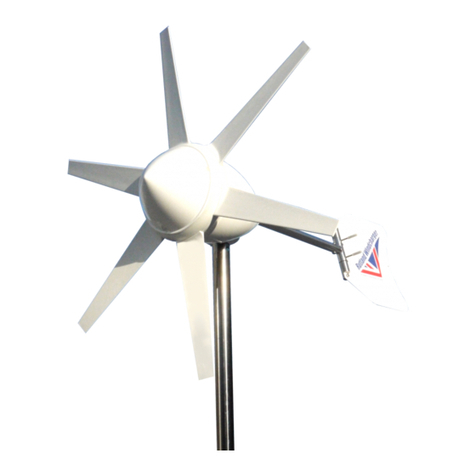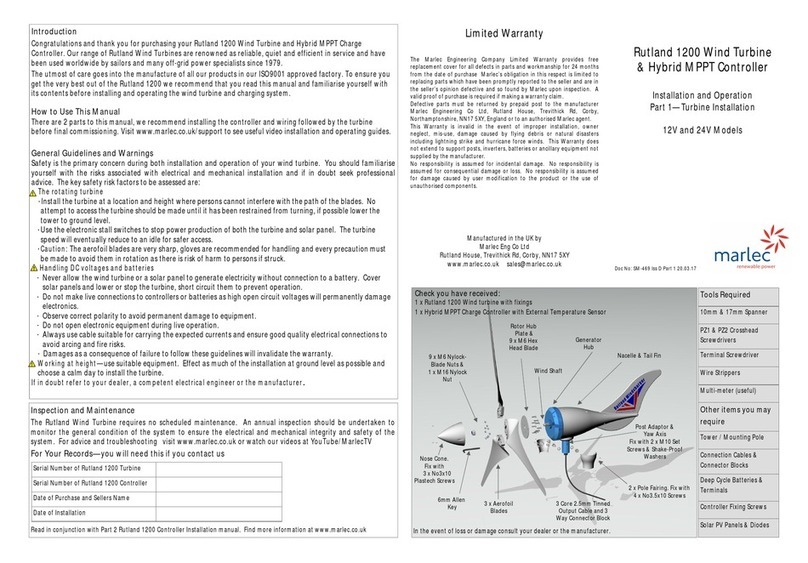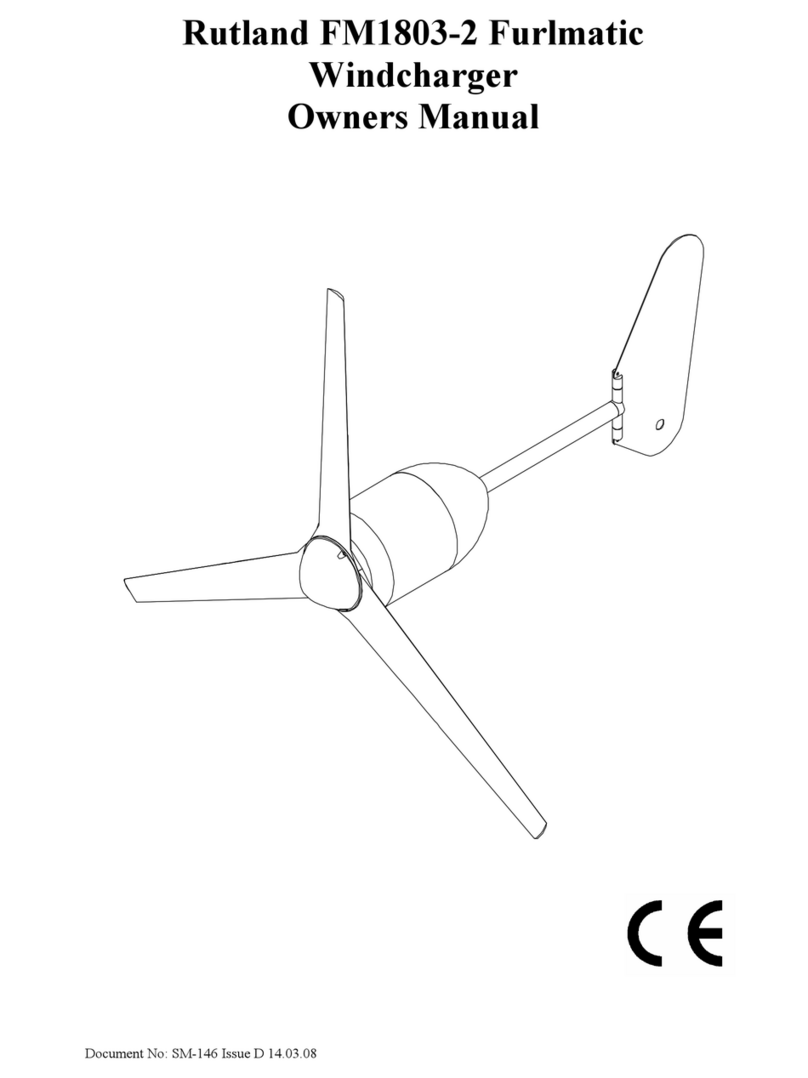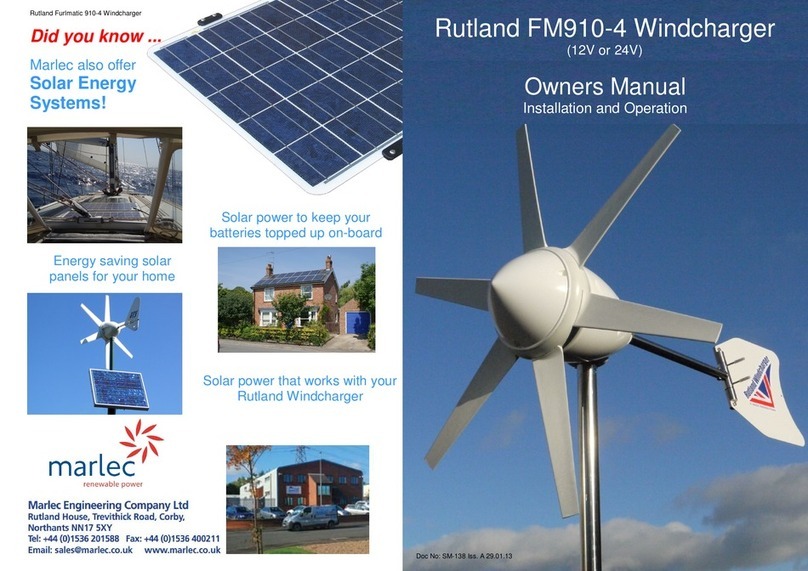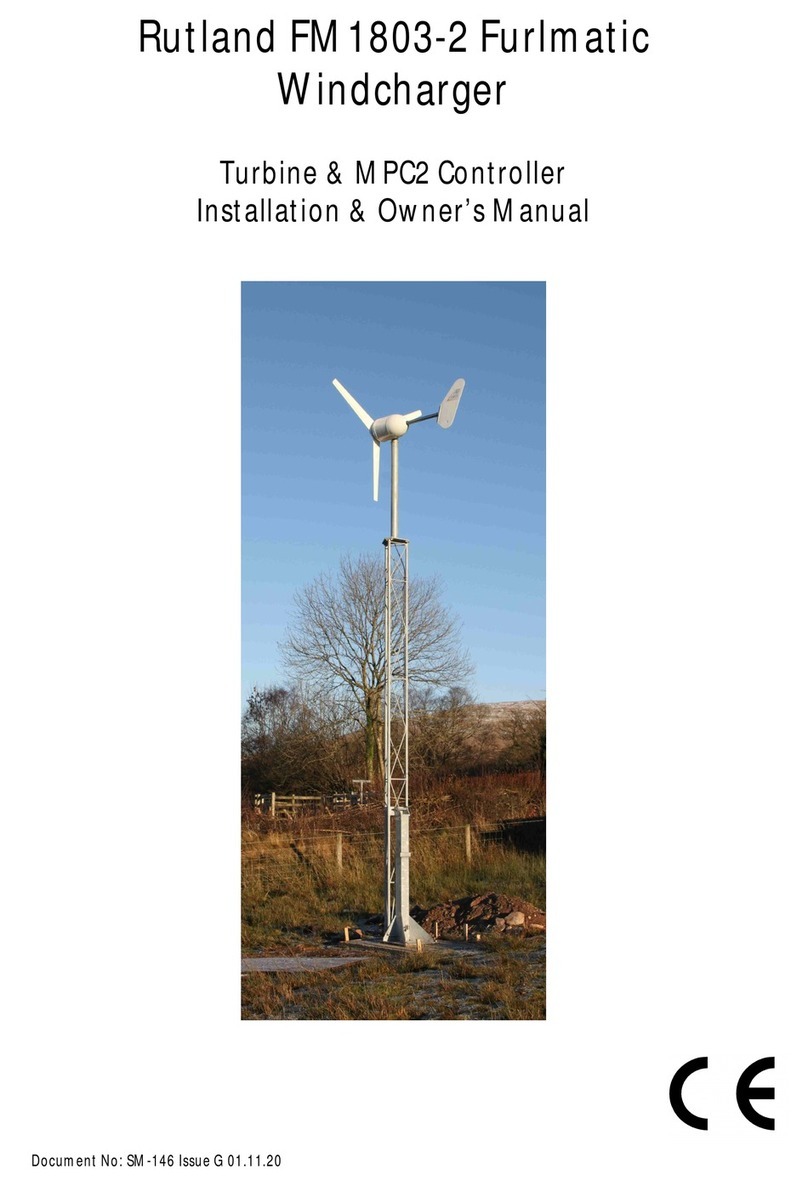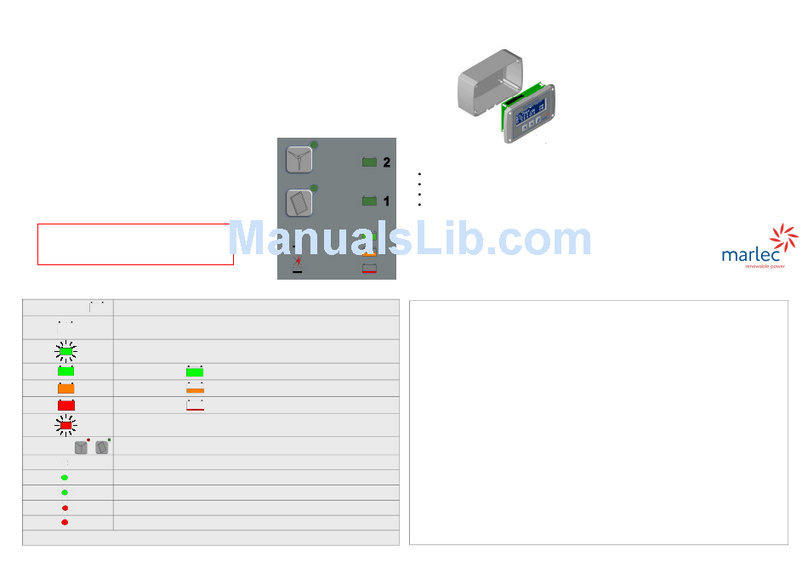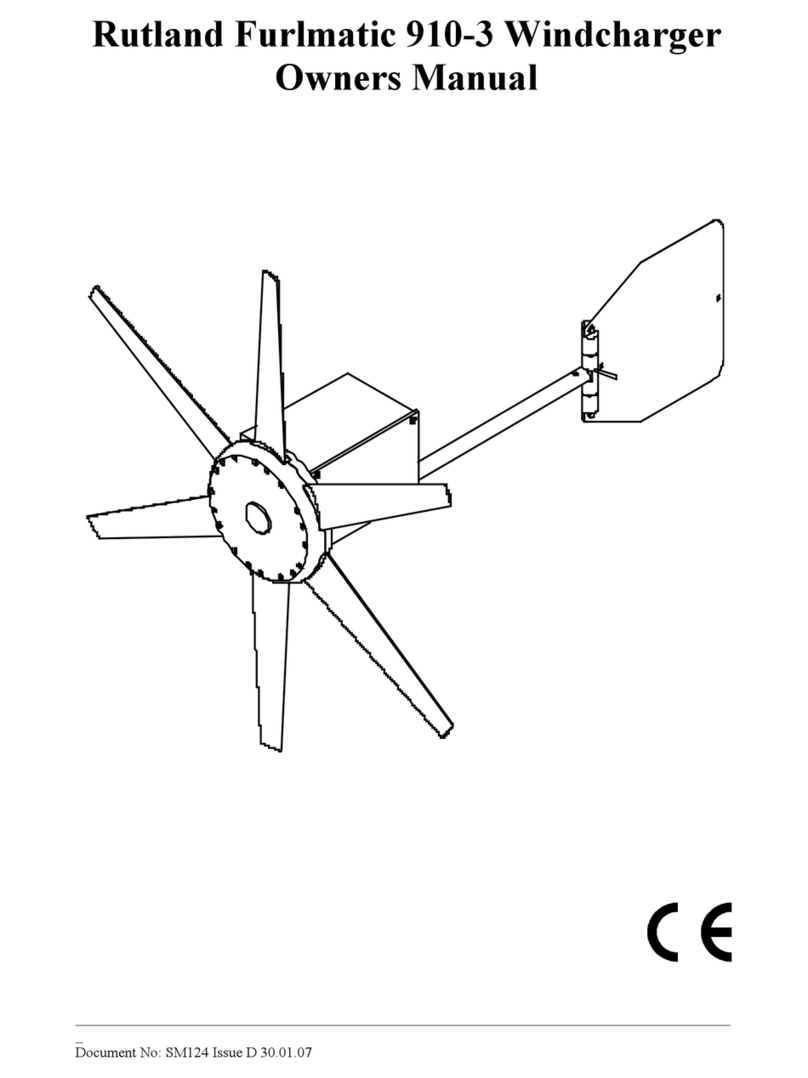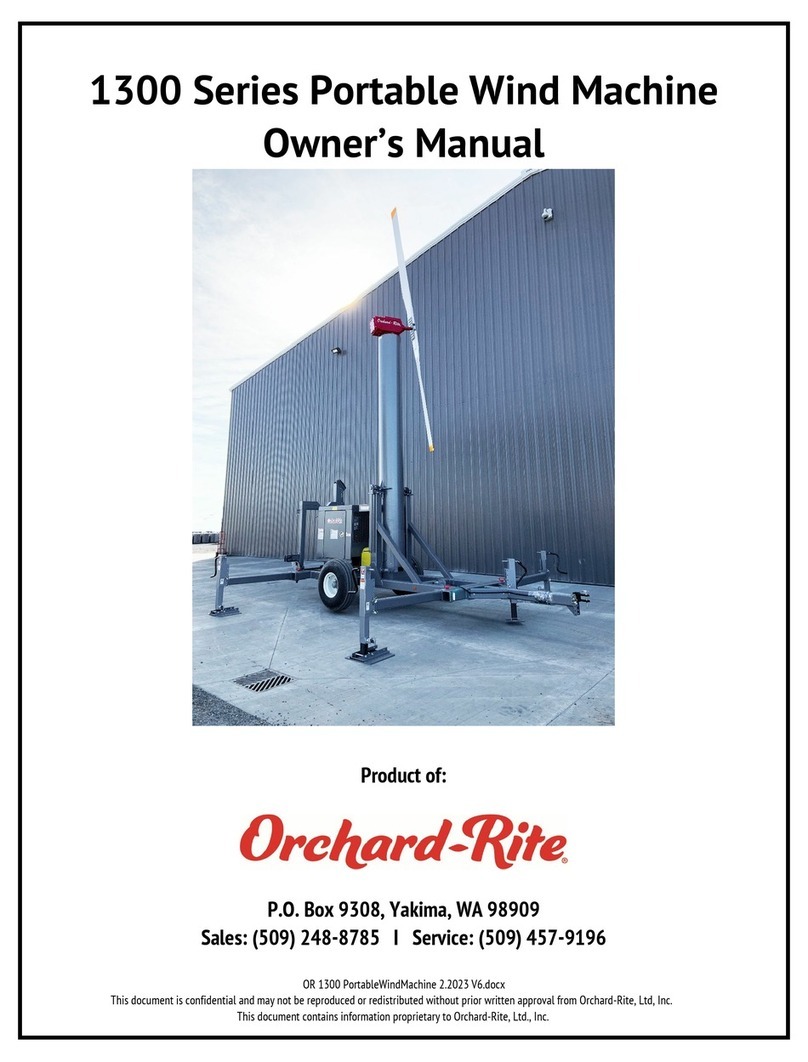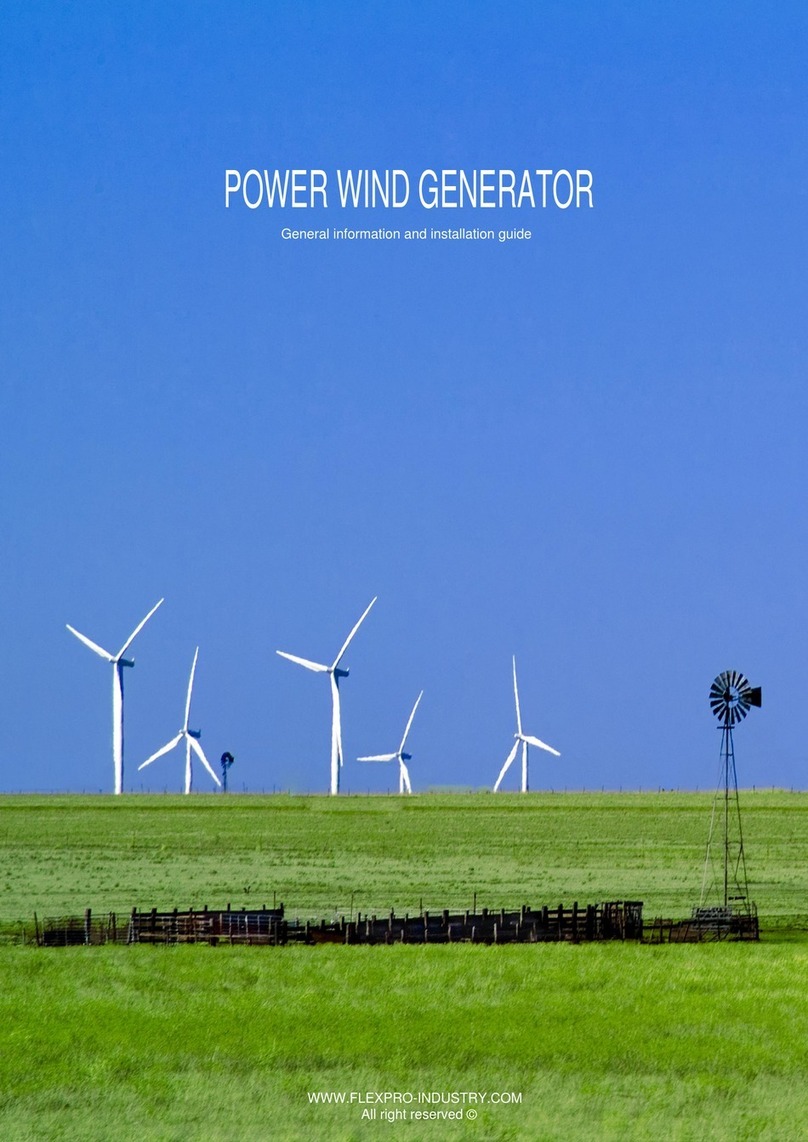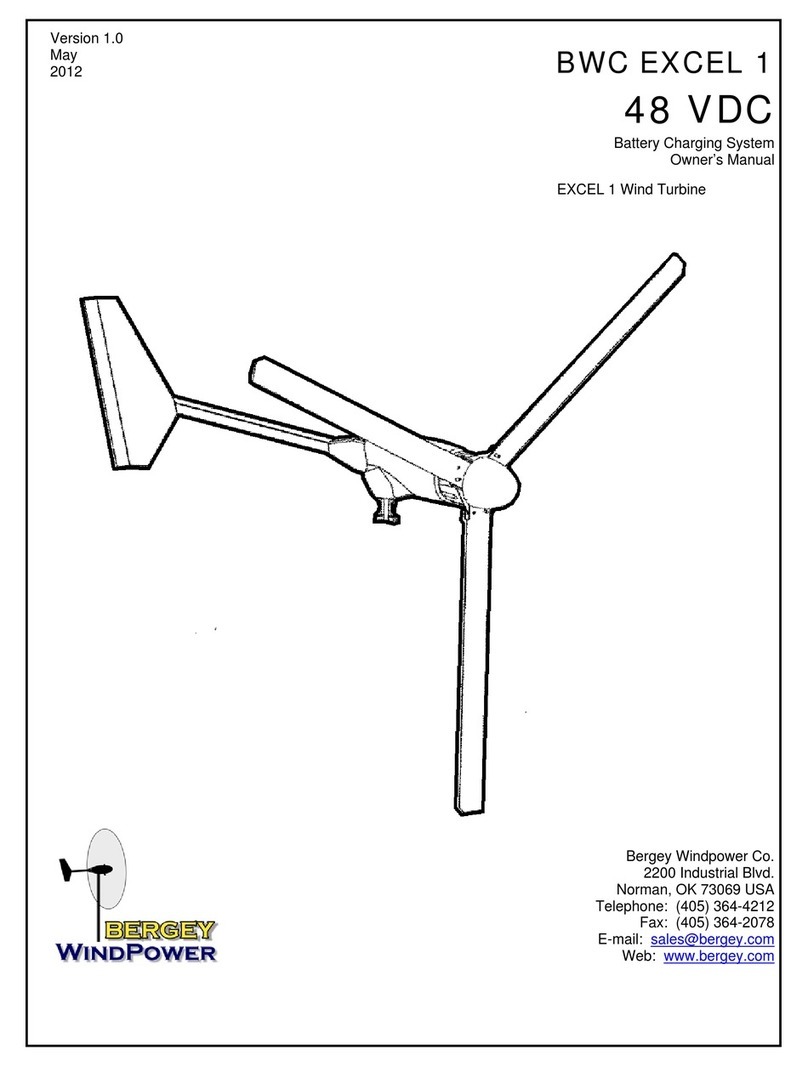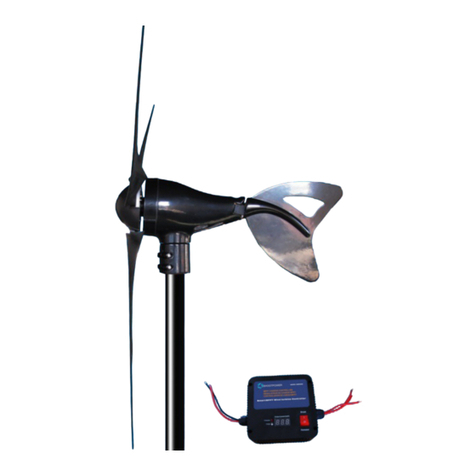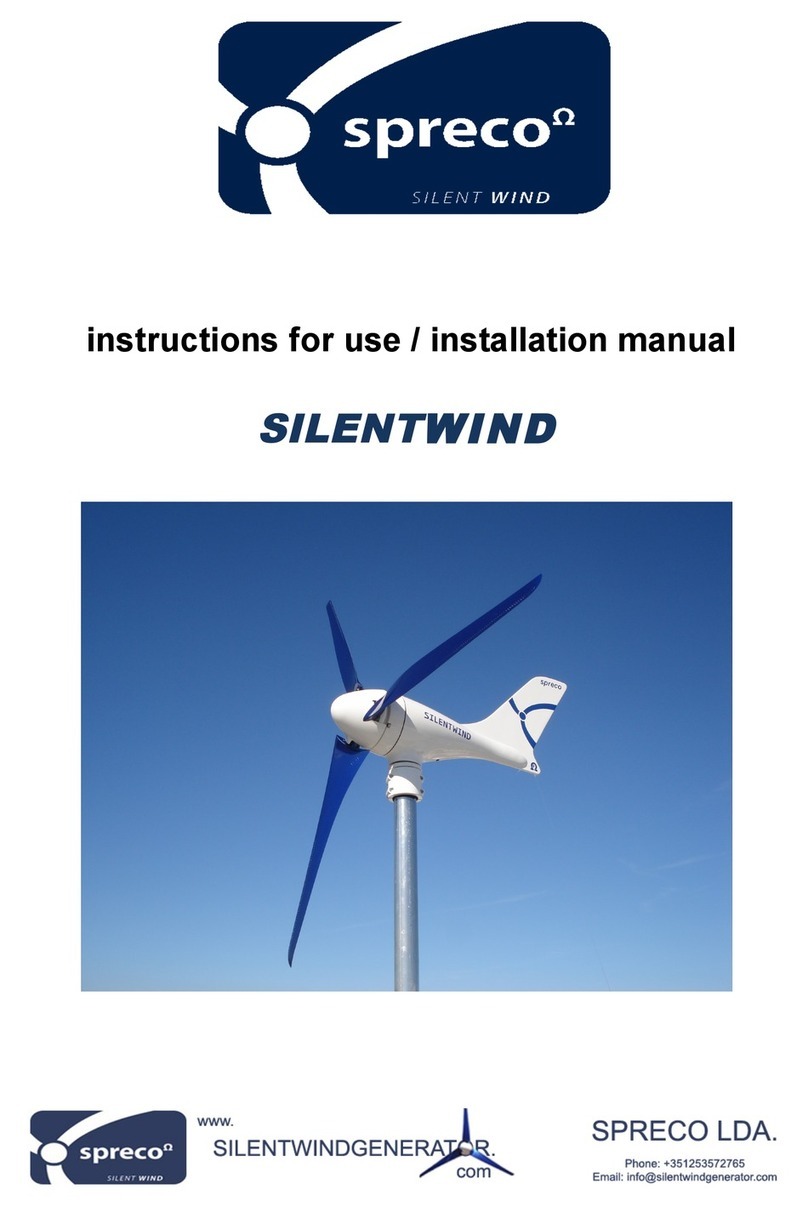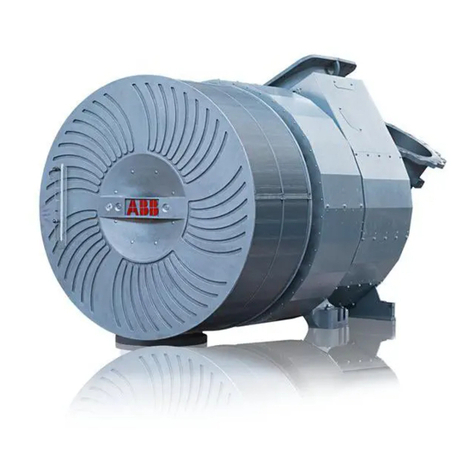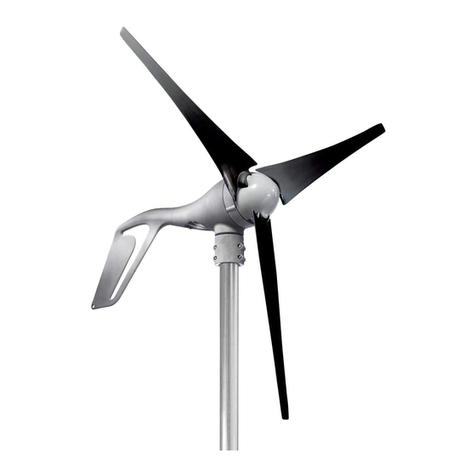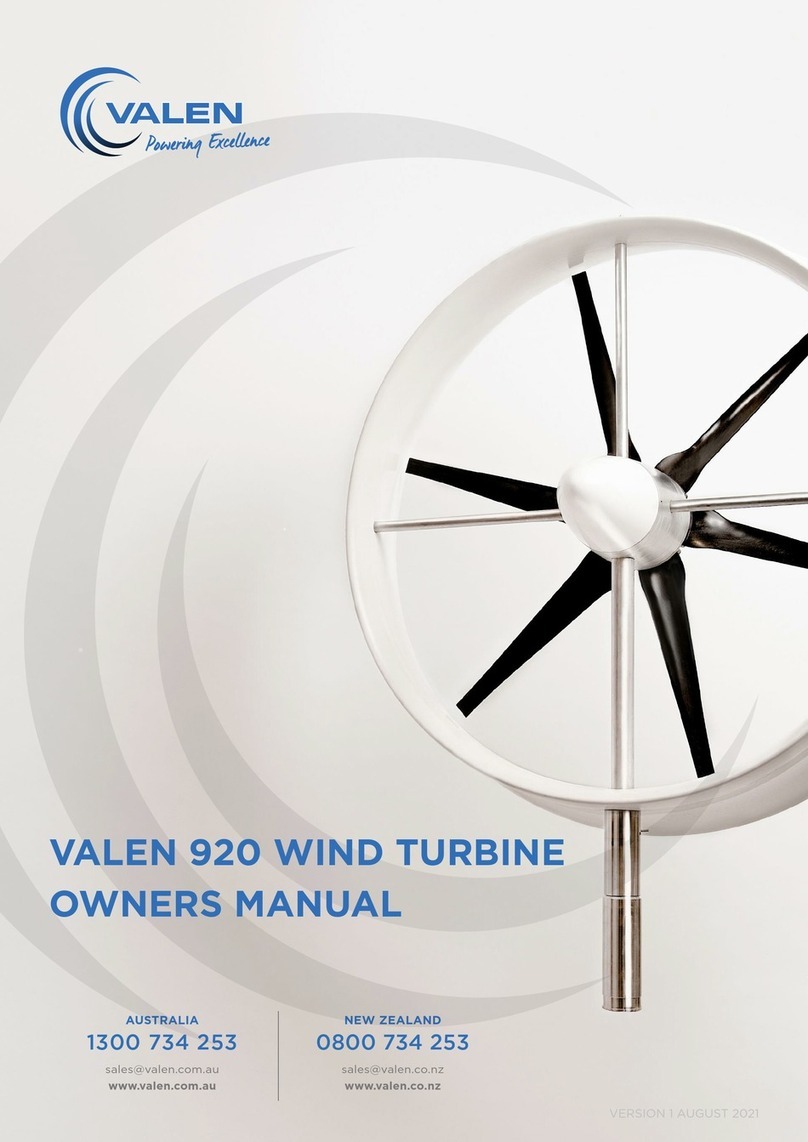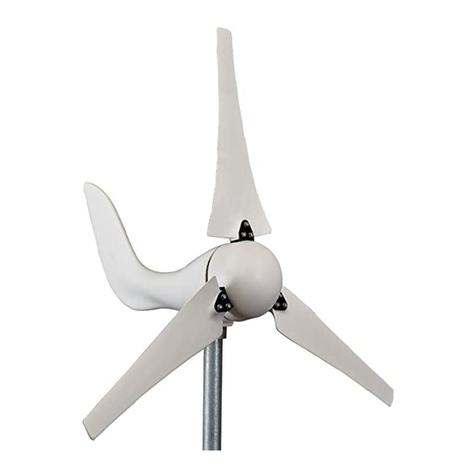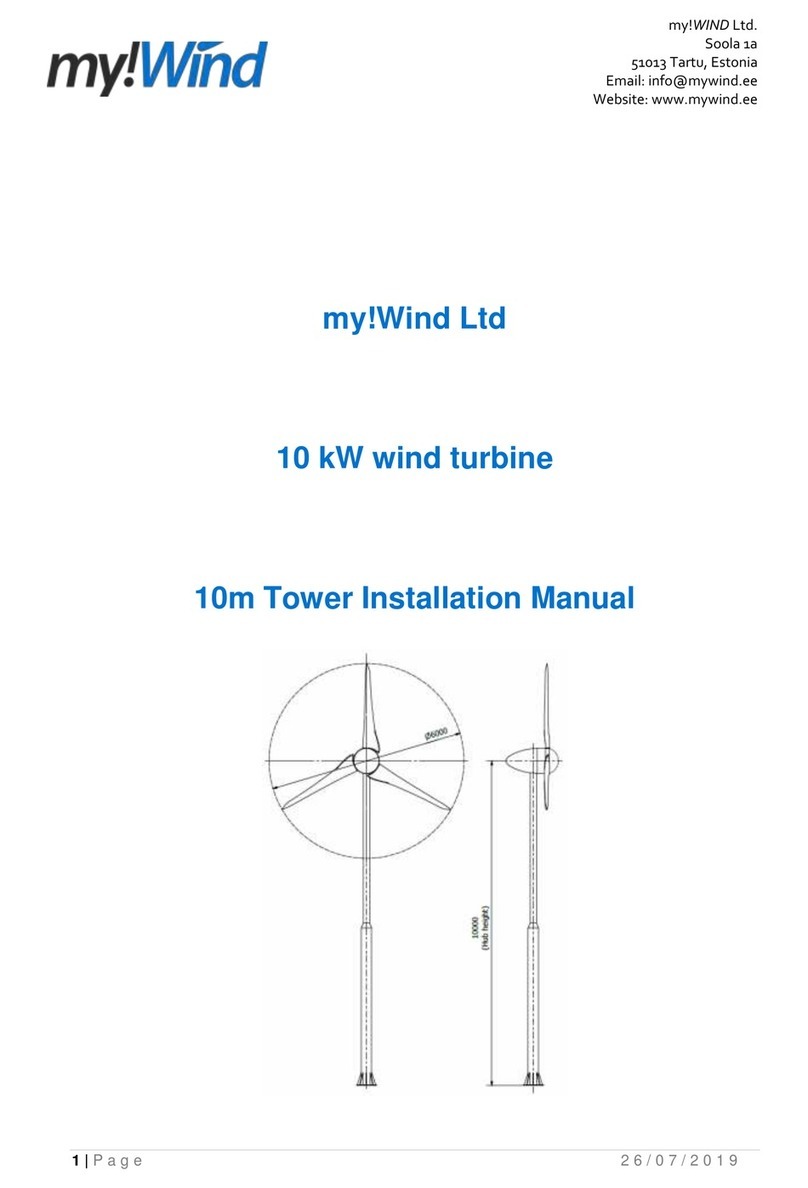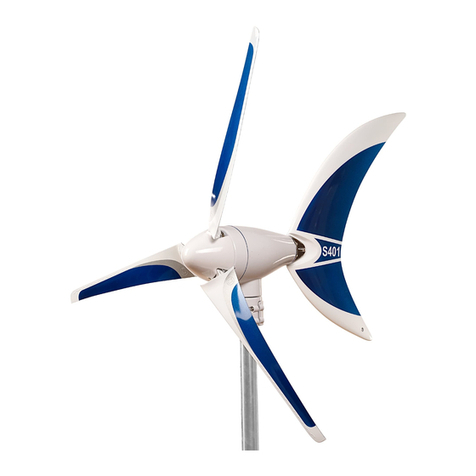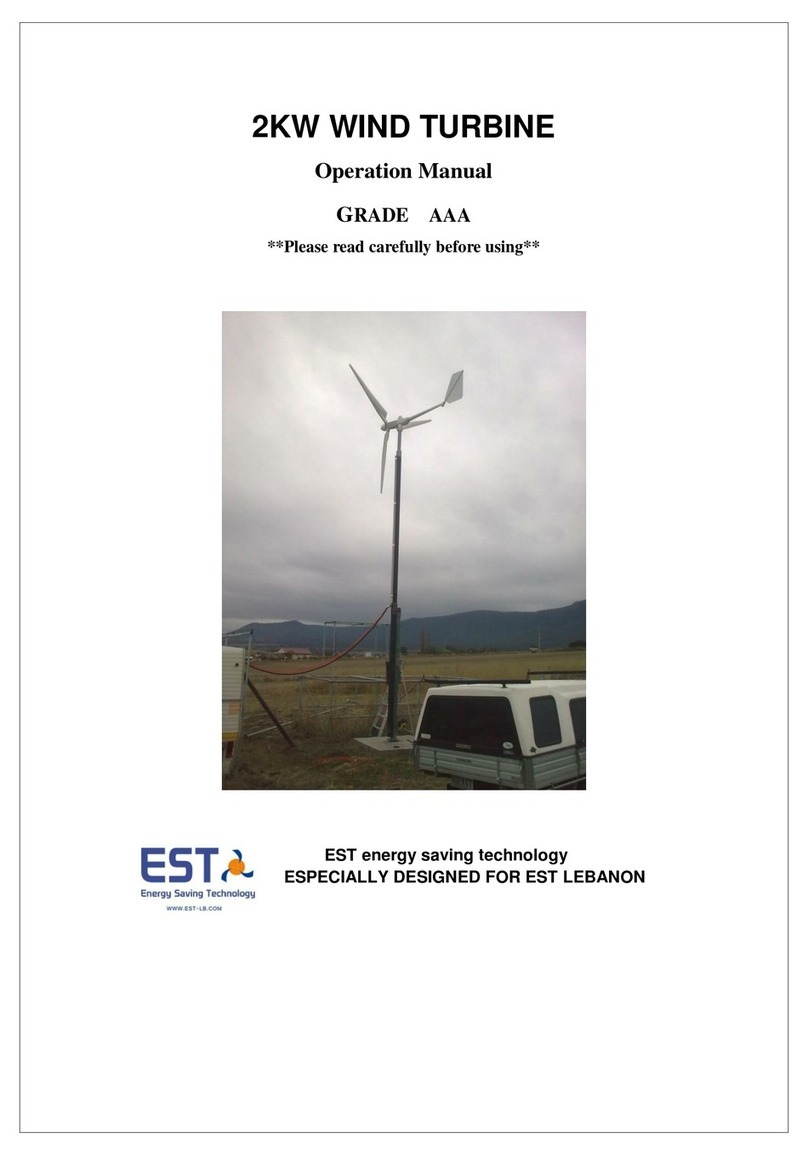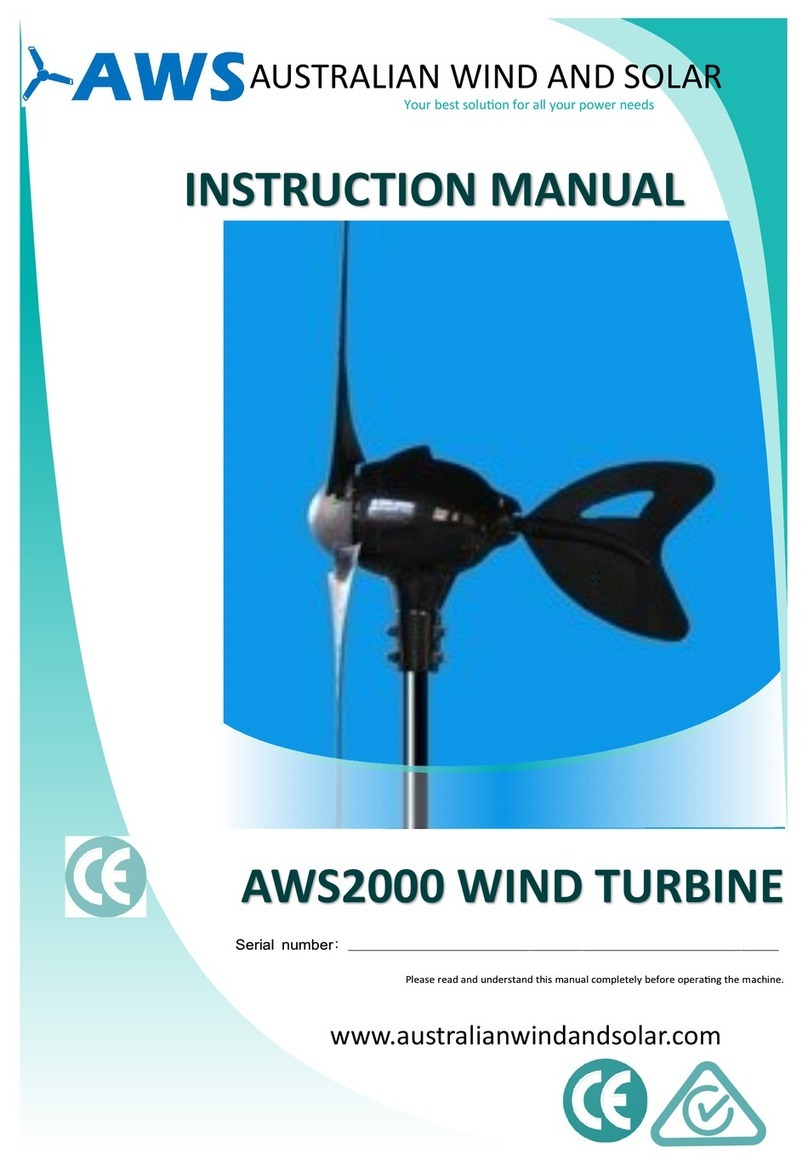Rutland 504 Windcharger Installation & Operation
Doc No: SM-150 Issue C 17.03.14 5 Marlec Eng Co Ltd
General Guidelines and Warnings
x Mounting pole outside diameter MUST NOT exceed 38.1mm for at least the top 0.5m.
Larger section poles must not be used as this will reduce the tower to blade clearance. In
high wind conditions this could cause damage to the Windcharger by allowing the blade to
come into contact with the mounting pole. A broken blade will cause turbine imbalance
with consequent damage.
x When turning, the Windcharger is capable of generating voltages in excess of the nominal
voltage. The turbine must never be allowed to rotate unless it is electrically connected to a
regulator or batteries. Connecting an open circuit running turbine to the electrical system
can cause serious damage to system components owing to excessive voltage. Caution must
be exercised at all times to avoid electric shock.
x Stopping the turbine – this may be necessary to undertake battery maintenance. If possible
stopping the turbine should be done in low wind speed conditions. The turbine can be
slowed by rotating or orienting the tail fin upwind, this will slow the turbine sufficiently for it
to be safely secured to the pole with rope. Avoid leaving the turbine tied up for any period
of time, we recommend that the turbine either be covered to give protection from the
weather or removed and stored in a dry location. We recommend the use of Marlec charge
regulator that includes a shutdown switch.
x Choose a calm day to install the equipment and consider other safety aspects. No attempt
to repair the system should be made until the wind generator is restrained from turning.
x The Windcharger is fitted with ceramic magnets, which can be damaged by heavy handling.
The main generator assembly should be treated with care during transit and assembly.
x It is essential to observe the correct polarity when connecting the Windcharger and all other
components into an electrical circuit. Reverse connection will damage the Windcharger and
incorrect installation will invalidate the warranty.
x The Rutland 504 Windcharger is suitable for sailing boats and some land based
applications. When storm winds are forecast the turbine can be restrained to minimise
wear and tear particularly when installed on land based applications where furling model
windchargers are normally recommended. Note that where the manufacturer recommends
a furling type Windcharger should have been used the warranty is invalidated in cases of
storm damage.
x If in doubt, refer to your dealer, a competent electrical engineer or the manufacturer.
